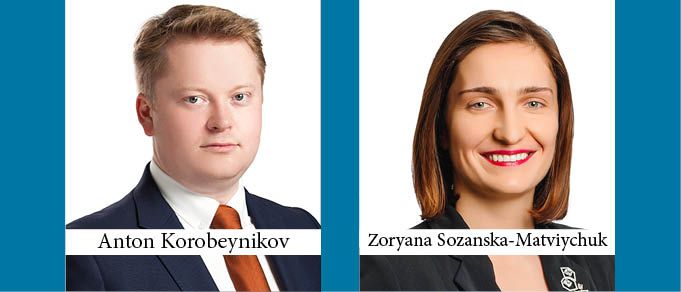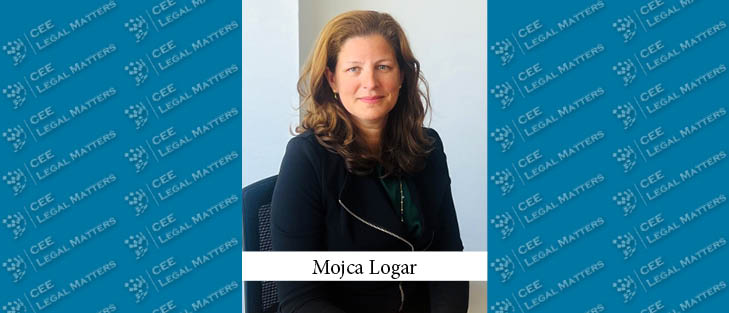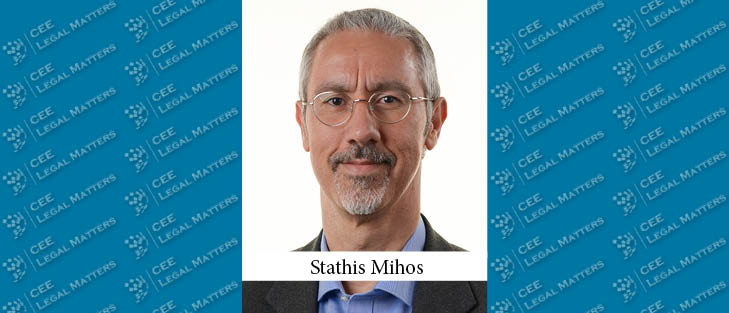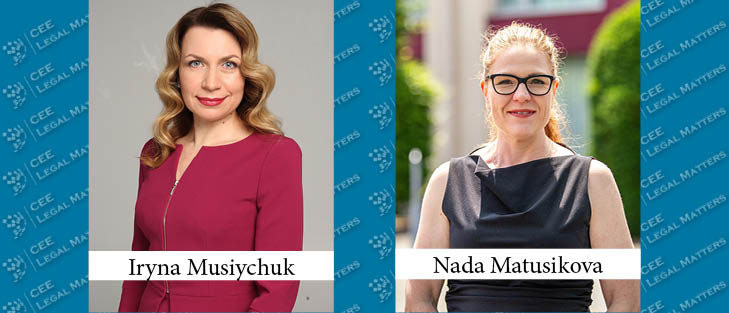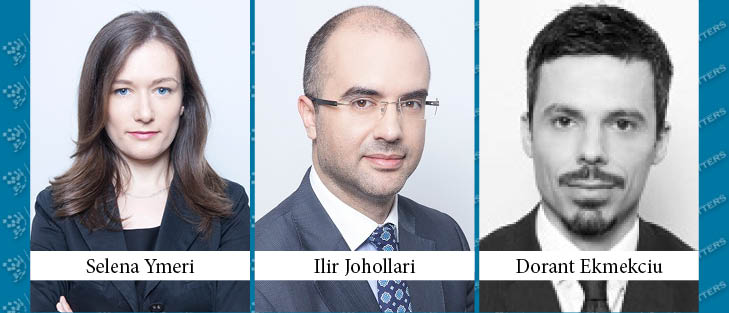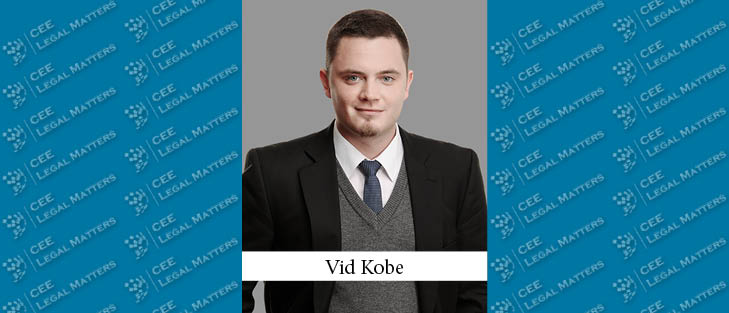The Deal: In September 2018, CEE Legal Matters reported that Sayenko Kharenko had advised Mriya Agro Holding and Hogan Lovells had advised the company’s ad hoc committee of note-holders on the restructuring of its USD 1.1 billion debt, and that the two firms had advised the company on its subsequent sale of the company’s assets, including infrastructure facilities, machinery and land lease rights, to the Saudi Agricultural & Livestock Investment Company United Kingdom (SALIC). Dickson Minto and Redcliffe Partners advised SALIC on its acquisition.
We reached out to Sayenko Kharenko for more information about the restructuring, and to Redcliffe Partners for details of the sale.
The Players:
- Counsel for Mriya Agro Holding: Anton Korobeynikov, Partner, Sayenko Kharenko
- Counsel for SALIC: Zoryana Sozanska-Matviychuk, Partner, Redcliffe Partners
CEELM: Marcin, Anton, how did you and Sayenko Kharenko become involved with Mriya Agro Holding on this matter? Why and when were you selected as external counsel initially?
Anton: Sayenko Kharenko was engaged several months after the process actually started. Initially, the Noteholders, representing one category of creditors of Mriya Agro Holding, put the holding company into liquidation and new management was appointed. The group, however, had other creditors and the new management was required to act in the interest of all creditors. For this reason, they needed to engage an external advisor who would be different from the advisors acting for a particular group of creditors. That is when we met with the provisional liquidator of Mriya Agro Holding Public Limited and the new management of the group. We discussed the then-current situation and the ultimate goal of the creditors and gave our views on structuring and expressed several ideas on how the then-existing plan could be improved. I believe that the management and provisional liquidator saw that the firm could add value to the process and approved our appointment.
CEELM: Zoryana, what about you? How did you and Redcliffe Partners get the mandate from SALIC?
Zoryana: It was a referral from another law firm (for which we are very grateful). We initially started working on this matter in March of this year, at the pre-acquisition review stage.
CEELM: What, exactly, were the initial mandates when you were each retained for this project?
Anton: Generally, our mandate never changed throughout the process. We, as well as other advisors involved, were requested to come up with a legal structuring solution to get the commercial terms of restructuring implemented and, along the way, transform the complicated debt structure into something simple and straightforward. It was the implementation elements that changed, because the tax itself was challenging and the jurisdictions involved (including Ukraine) did not have legal regimes that would allow for an easy and effective plan for with this type of situation.
Zoryana: The initial mandate was limited to pre-acquisition review. Even that scope turned out to be quite a task. It is fair to say that we did not know what we were getting ourselves into, as this was by no means a regular due diligence exercise. The nature of the target, with its history and also with many ongoing processes which no one could or would pause so that the lawyers could do their “static” pre-acquisition review, made the due diligence alone challenging and very interesting. At the start of the due diligence, we had a few meetings with the top management of Mriya, who patiently guided us through the various processes at Mriya.
CEELM: Anton, who was on the Sayenko Kharenko team, and what were their individual responsibilities?
Anton: Our work on the project involved the firm’s corporate, finance and restructuring, tax, and litigation practices. The participation of corporate and finance and restructuring practice was required due to the nature of the project. The firm’s tax team provided support in the assessment of tax viability of the structuring, which was an important (and very difficult) aspect of it. Since the project also involved certain court procedures (e.g., restructuring in insolvency or pre-insolvency rehabilitation procedure), we involved our litigation team to assist with that.
Alina Plyushch and I were the two coordinating partners on this project. Apart from general coordinating responsibilities, Alina primarily dealt with the corporate aspects of the project, and I, together with Olexander Droug (the firm partner experienced in insolvency and restructuring matters) was responsible for debt restructuring elements. We had great support from the firm’s Banking and Finance team (consisting of Counsel Olexander Olshansky and Associates Vira Pankiv and Denis Nakonechniy), Corporate team (led by Associates Dmytro Hotsyn and Dmitriy Riabikin), Tax team (led by Associate Yuriy Dmytrenko), and Litigation team (led by Associate Oleksiy Koltok).
CEELM: Zoryana, who was on your team at Redcliffe Partners?
Zoryana: Dmytro [Fedoruk] and Rob [Shantz], both Partners in our Corporate and M&A department, gave overall supervision and held our hands at the most challenging times. I supervised the due diligence work and was a primary contact for all due diligence matters. The due diligence team was big and included many colleagues from Corporate, Banking and Finance, Litigation, Real Estate, and other departments. The other team members included Senior Associates Anna Pushkaryova, Natalia Kovalyova, Associates Olesia Mykhailenko and Yulia Brusko, and Junior Associates Anton Rekun and Bogdan Nykytiuk. As the matter progressed, we got more and more involved in the debt restructuring, corporate restructuring, and also transactional work. It is one of those projects which cannot be done without a good team effort, and each member of the team was eager and ready to help with all sorts of tasks.
CEELM: Please describe the final agreements with all parties in as much detail as possible: How were they structured, why were they structured in that way, and what was your role in helping reach those agreements?
Anton: According to the final restructuring arrangement, the creditors of the group were split into two main categories: secured and unsecured creditors. For secured creditors, the market value of their collateral was determined and agreed, following which their claims in the amount covered by this value were restructured on individual terms. The amount of their claims not covered by the value of the collateral was included into the pool of unsecured creditors and dealt with on the same terms.
The restructuring arrangement for the group’s unsecured creditors envisaged that Mriya Agro Holding Public Limited would transfer most of the group’s assets into a new holding company in exchange of the new sustainable amount of debt and shares issued by the holding company. The new debt instruments and shares were offered to unsecured creditors proportionally to their share in the overall debt pool. Each creditor had an option to either choose the new debt and equity or request that these be sold in the market, with proceeds from the sale paid to the creditor. In exchange for receiving the new instruments or cash creditors were required to surrender their existing claims by transferring them to a group company. The Ukrainian operating companies of the group have also been going through restructuring in insolvency (in the end the most effective and clear way to deal with their debt in Ukraine).
While we have travelled a long way to this result and looked at all possible structures and legal solutions, ultimately this turned out to be the most effective and maybe the only practically way possible to achieve the required result. Sayenko Kharenko dealt with the Ukrainian elements of the structuring and provided Ukrainian input to the documentation relating to the issuance of new debt securities and their exchange. The firm was also responsible for preparing documentation relating to the surrender of the Ukrainian debt, as well as assisting the management analyze the matters relating to the restructuring in insolvency of the Ukrainian operating companies.
CEELM: Zoryana, how was the acquisition of Mriya by SALIC structured?
Zoryana: Our role was limited to Ukrainian law matters. That said, the transaction documents included a lot of provisions regarding Ukrainian matters, e.g., things that had to be done before completion in Ukraine and also various items to be dealt with post-completion in Ukraine. Apart from the usual SPA and related documents, there were also agreements dealing with various post-completion matters, where the target and the buyer agreed to co-operate on a number of matters post-closing, including completion of some ongoing processes such as transfer of material assets.
CEELM: What’s the current status of the restructuring and sale?
Anton: The restructuring has now finally been closed successfully and the creditors received either new debt and equity in the new group, or cash, if they so opted. Furthermore, following the restructuring the deal was signed to sell the Mriya group to SALIC.
Zoryana: The acquisition successfully closed on November 5.
CEELM: What was the most challenging or frustrating part of the process for each of you?
Anton: While the whole process was quite challenging, the most difficult part was to come up with an appropriate structuring solution which would achieve the commercial goals and work properly and with sufficient predictability across all jurisdictions. I believe the global structure in this project changed around four or five times, and within each global structure there were elements that had to be changed dozens of times. The legal teams took apart every restructuring instrument available under Cypriot, Ukrainian, and English law to see if it could be effectively applied to this transaction. Most of the times we would face either currency control issues, or tax issues, or untested procedures with unacceptable implementation risks or another issue or risk that made it impossible to use this or that element.
Zoryana: To me, this transaction is the most complex and challenging transaction I have done to date. This project was very non-static, from the due diligence stage and all the way till closing.
CEELM: Was there any part of the process that was unusually or unexpectedly smooth/easy?
Anton: In fact, the execution process turned out to be unexpectedly smooth, which was because a tremendous amount of time and effort was put into the preparation process.
Zoryana: There were no easy parts in this process but working for an experienced/ sophisticated client like SALIC certainly made our life easier on this transaction. SALIC was familiar with the Ukrainian market before Mriya, so no lengthy explanations were required of even complex issues.
CEELM: Did the final result match your initial mandate, or did it change/transform somehow from what was initially anticipated?
Anton: Because the initial mandate was quite broad, in the end the result was exactly what we were engaged for.
Zoryana: The final mandate was nothing like what we anticipated, and overall, our involvement was greater than expected, especially at the stage of preparing transaction documents.
CEELM: What specific individuals at Mryia Agro Holding directed you, Anton, and how did you interact with them?
Anton: We primarily communicated with Ton Huls, the group’s CFO, Sergiy Ignatovskiy, Chief Legal Officer of the group, and Chris Iacovides and Andri Antoniou, the joint liquidators of Mriya Agro Holding Public Limited.
CEELM: What about you, Zoryana, with SALIC?
Zoryana: We mainly worked with Alastair Stewart, Chief Financial Officer at Continental Farmers Group. Alastair would come to Ukraine quite often so we had a few personal meetings, which was very helpful in discussing many key, strategic matters. On a daily basis we interacted by email. Alastair normally responded very quickly, which is great from the point of view of a lawyer requiring quick feedback from the client in order to be able to progress things.
CEELM: How would you describe the working relationship with other firms on the deal?
Anton: We worked with Hogan Lovells a lot on this. Hogan Lovell Partner Alex Kay and his team were the ones who took the leading role in driving this restructuring forward. We also had regular communications with Latham & Watkins until the latest stage of the project, when they became less actively involved. L&W, representing another group of creditors (bank lenders), provided substantial input and alternative structuring ideas that helped to make sure that the restructuring was acceptable to all types of creditors. Most of the communications were done by phone or e-mail, with just a few meetings in person in Kyiv. We had a structured communication schedule, with weekly update calls among all the parties where major issues and status updates were discussed, following which everyone knew what they should be doing and follow-up communications took place within smaller relevant groups. It is difficult to establish a point where the “final negotiations” started, but you could say that finalization of the restructuring took a couple of months.
Zoryana: We mainly worked with Mriya directly, so there was not so much interaction with HL or SK. We did work a lot through Dickson Minto, who were the lead counsel on this matter from the buyer’s side.
CEELM: How would you describe the significance of the deal to Ukraine?
Anton: I believe this is a benchmark deal for the whole region, not only for Ukraine. It showed that even in such adverse circumstance, you can get an abandoned and sinking business afloat. We have heard mixed comments on the result of this restructuring, with skeptics saying that many creditors exited before the end of the restructuring and ultimately creditors suffered a loss. However, I believe that the starting point to determine the success or failure of the restructuring exercise should be the point of distress, where the risk was that the creditors would not receive anything at all. From this point, successfully restructuring the business of this size and complexity and selling it is definitely a successful ending.
Zoryana: Ukraine needs more deals like the SALIC/Mriya deal. It sends a very good message to other potential investors who may be hesitant to do business in Ukraine. Agriculture is big in Ukraine so more investment in the agricultural sectors would, in my humble view, be good for the economy overall.
Editor's Note: This article was changed slightly to reflect Zoryana Sozanska-Matviychuk's December 2018 promotion from Counsel to Partner at Redcliffe Partners.
This Article was originally published in Issue 5.11 of the CEE Legal Matters Magazine. If you would like to receive a hard copy of the magazine, you can subscribe here.

